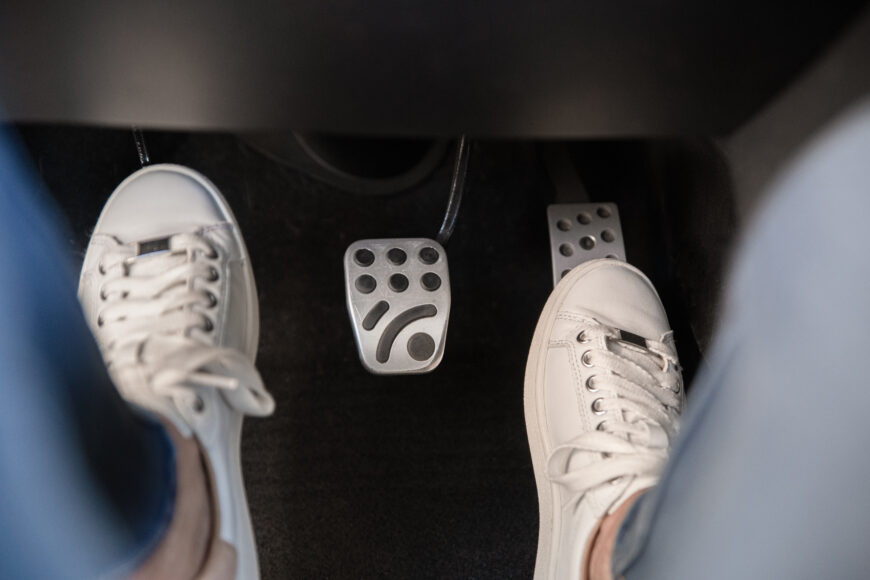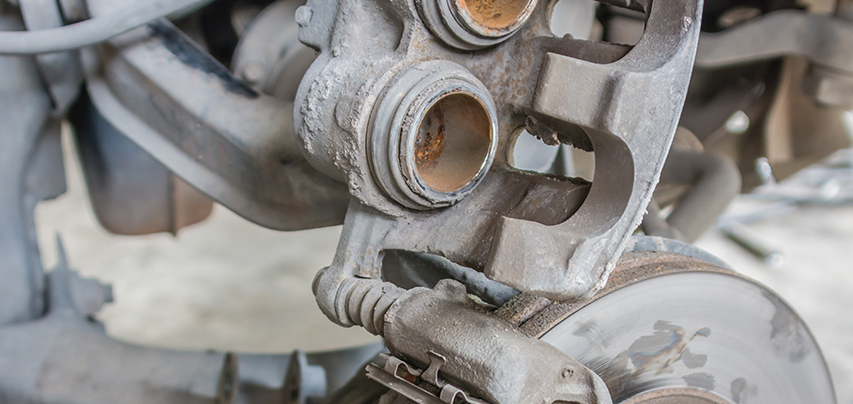How to Fix Spongy Brakes
To fix spongy brakes, start by checking for air in the brake lines and bleeding the brakes. Then, inspect the brake pads and rotors for wear and tear.
Spongy brakes can also be caused by low brake fluid levels, so ensure the fluid is at the correct level and free of contaminants. Properly maintain your braking system to ensure optimal performance and safety on the road. If you notice spongy brakes while driving, it is essential to address the issue promptly to avoid any safety risks.
By following these steps and conducting regular maintenance, you can ensure that your brakes function effectively and keep you safe while driving. Prioritizing brake system health is crucial for a smooth and safe driving experience.
Causes Of Spongy Brakes
One of the most common issues with a vehicle’s braking system is spongy brakes. Spongy brakes reduce the effectiveness of stopping your car, posing a serious safety concern. Understanding the causes of spongy brakes is crucial to fix the issue and ensure reliable braking performance.
Air In The Brake System
Air in the brake system is a common cause of spongy brakes. When there is air trapped in the brake lines, it creates a compressible air pocket, leading to reduced brake responsiveness. This can occur during routine maintenance, such as brake pad replacement or fluid bleeding, if not performed carefully and adequately.
Brake Fluid Contamination
Contaminated brake fluid can also contribute to spongy brakes. When moisture seeps into the brake system, it can contaminate the brake fluid, causing corrosion within the system and leading to a spongy feel when applying the brakes. Additionally, using the wrong type of brake fluid or mixing different types can also result in fluid contamination, compromising brake performance.

Credit: www.autozone.com
Tools And Materials Needed
Fixing spongy brakes requires the right tools and materials to get the job done effectively.
Brake Fluid
Brake fluid is essential for maintaining proper brake function and should be of high-quality.
Bleeder Kit
A bleeder kit helps remove air from the brake system, ensuring proper brake pressure.
Wrench
A wrench is needed to loosen and tighten brake components during the repair process.
Jack And Jack Stands
Using a jack and jack stands safely elevates the vehicle for easy access to the brakes.
Empty Container
An empty container is required to collect old brake fluid when bleeding the brakes, preventing spills.
Step-by-step Guide
Here is a simple step-by-step guide to help you fix spongy brakes on your vehicle:
Step 1: Elevate The Car
Jack up the car using a hydraulic jack and secure it on jack stands for safety.
Step 2: Locate The Brake Bleeder Screw
Find the brake bleeder screw, usually located behind each wheel on the brake caliper.
Step 3: Prepare The Bleeder Kit
Gather a brake bleeder kit, which typically includes a clear plastic hose and a wrench.
Step 4: Bleed The Brake Lines
Attach the clear hose to the bleeder screw and have someone press the brake pedal while you loosen the screw to release air bubbles.
- Tighten the screw and repeat the process until no more air bubbles are observed.
Step 5: Check The Brake Fluid Level
Remove the cap from the brake fluid reservoir and top up the fluid to the recommended level.
- Ensure to repeat the bleeding process for all four wheels to ensure optimal brake performance.

Credit: www.youtube.com
Tips And Precautions
Safety is paramount when dealing with spongy brakes. Following a few tips and precautions can help ensure a safer and more effective brake repair process. Highly contaminated or old brake fluid can lead to sponginess, requiring you to address the issue promptly. Knowing how to handle the situation correctly can help prevent accidents and ensure smoother driving experiences. Here are some important tips and precautions to keep in mind when fixing spongy brakes:
Ensure Safety
Before starting any brake repair, ensure that the vehicle is parked on a flat and stable surface. Always engage the parking brake and use wheel chocks to prevent the car from moving. Wearing safety goggles and gloves is essential to protect your eyes and skin from potentially harmful brake fluid.
Use The Right Brake Fluid
Choose the correct type of brake fluid recommended by the vehicle manufacturer. Using the wrong brake fluid can cause damage to the entire brake system and might not work effectively, resulting in sponginess. Always refer to the owner’s manual or consult with a professional mechanic to determine the appropriate brake fluid for your vehicle.
Avoid Brake Fluid Contamination
To maintain brake performance, it is necessary to avoid contamination of the brake fluid. Always use a clean and sealed container of brake fluid. Additionally, make sure that there is no dirt, dust, or moisture around the master cylinder or brake fluid reservoir when topping up the brake fluid. Any contamination can lead to spongy brakes and compromise the effectiveness of the braking system.
When To Seek Professional Help
When your brakes feel spongy, it is important to seek professional help for a proper fix. Don’t hesitate to consult with a qualified mechanic to ensure your safety on the road.
Persistent Spongy Brakes
If you have followed the steps to fix spongy brakes and the problem persists, it may be time to seek professional help. A persistently spongy brake pedal could indicate that there is a more serious underlying issue that requires expert knowledge and experience to diagnose and resolve. Continuing to drive with spongy brakes can compromise your safety on the road, so it is crucial to address the problem promptly.
Lack Of Experience Or Tools
While some brake issues can be resolved with basic DIY skills, attempting to fix spongy brakes without the necessary experience or tools can sometimes do more harm than good. Brake systems are intricate and delicate, requiring specific techniques, specialized equipment, and a comprehensive understanding of how the system works. If you are uncertain about how to properly diagnose or fix spongy brakes, it is always best to leave it to the professionals to avoid any potential mishaps that could further damage your brakes.
Complex Brake System Issues
In some cases, spongy brakes can be a symptom of more complex brake system issues beyond the scope of a DIY repair. Components such as master cylinders, brake lines, or even the brake booster may be malfunctioning, leading to the spongy feel in your brake pedal. These advanced brake system problems are best handled by experienced technicians who have the knowledge and tools to accurately diagnose and fix the underlying issues. Seeking professional help ensures that all brake system components are thoroughly inspected, repaired, or replaced as needed, restoring optimal brake performance and giving you peace of mind on the road.
Remember, your safety should always be a top priority. If you have followed the troubleshooting steps for spongy brakes and the issue persists, seeking professional help from a qualified mechanic or automotive service center is essential to ensure the problem is properly diagnosed, addressed, and resolved. Their expertise, experience, and access to specialized tools will enable them to provide you with the most effective and lasting solution to your spongy brake problem.

Credit: www.wagnerbrake.com
Frequently Asked Questions On How To Fix Spongy Brakes
How Do I Firm Up My Brake Pedal?
To firm up your brake pedal, start by checking the brake fluid level. Bleed the brakes if necessary and inspect for any leaks. Consider replacing worn brake pads and rotors. Adjusting the brake pedal clearance and maintaining proper tire pressure can also improve pedal firmness.
Will Spongy Brakes Fix Themselves?
No, spongy brakes will not fix themselves. Spongy brakes indicate air or moisture in the brake lines, needing professional repair.
Why Is My Brake Pedal Still Soft After Bleeding?
A soft brake pedal after bleeding may be due to air in the brake lines. Re-bleeding the brakes correctly can help eliminate air pockets and restore firmness to the pedal.
Why Are My Brakes Suddenly Spongy?
Spongy brakes can indicate air or moisture in the brake lines, leading to decreased brake performance. Have a professional inspect for leaks, worn brake components, or air in the system to restore proper brake function. Regular maintenance can prevent spongy brakes.
How Do You Know If You Have Spongy Brakes?
If you press the brake pedal and it feels soft or mushy, that’s a sign of spongy brakes.
Why Are My Brakes Feeling Spongy?
Spongy brakes can be caused by air in the brake lines or a worn-out brake system.
Can I Still Drive With Spongy Brakes?
Driving with spongy brakes is dangerous and could lead to longer stopping distances or brake failure.
Conclusion
In a nutshell, addressing spongy brakes is crucial for road safety. By following the aforementioned steps and implementing the necessary solutions, you can regain the responsiveness and reliability of your brakes. Prioritizing brake maintenance and seeking professional help when needed will enhance your driving experience, ensuring a secure and smooth ride for you and your passengers.
